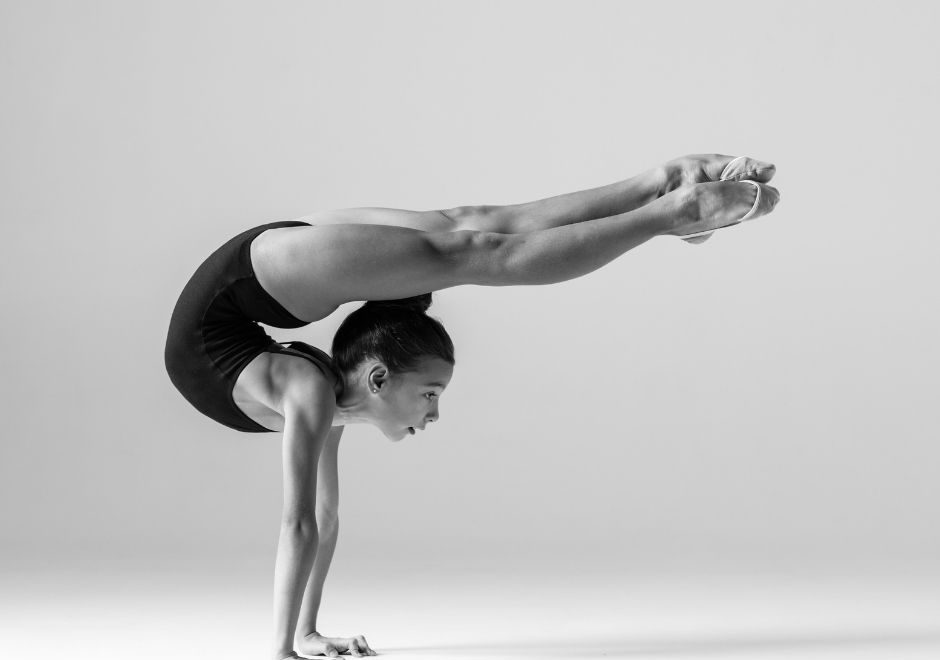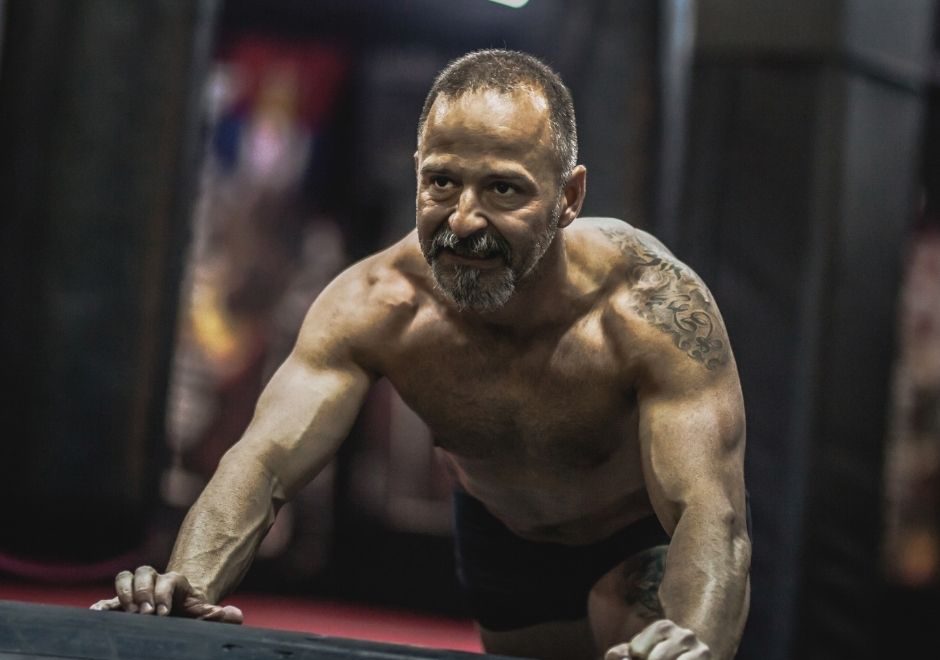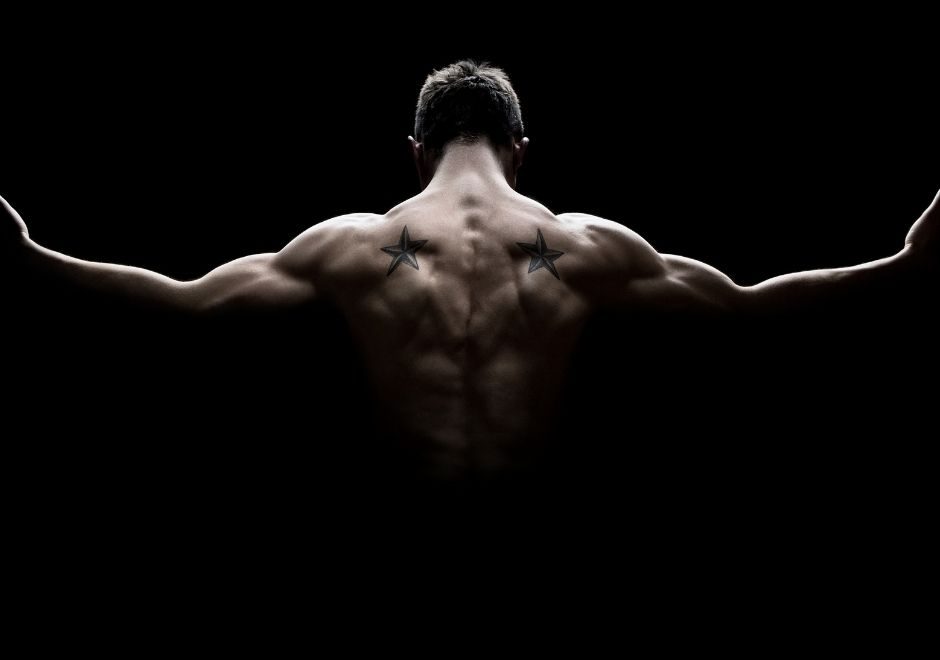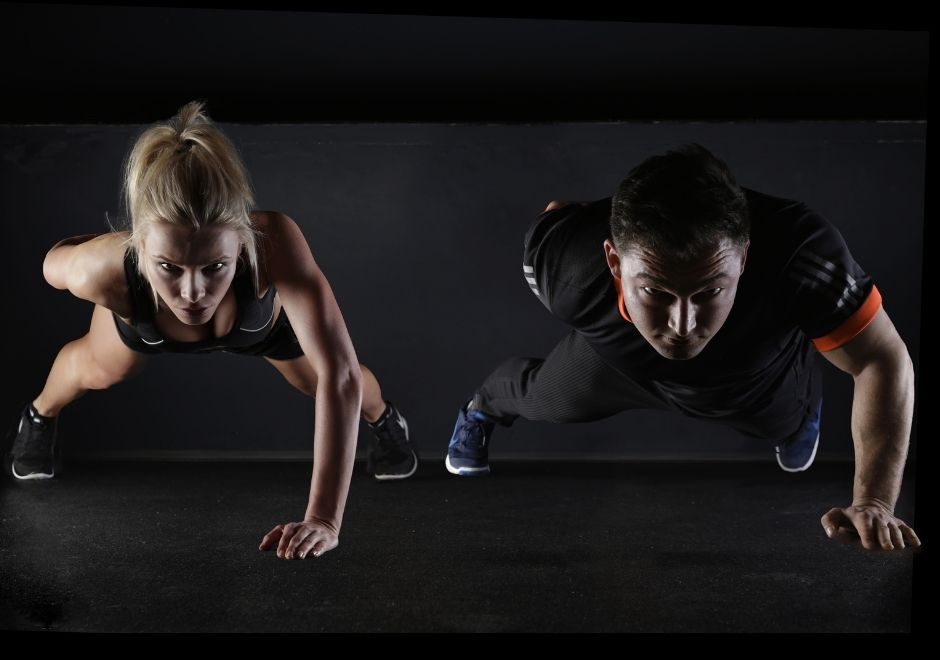Over the last few blogs we’ve considered exercise in terms of fitness, fat loss and it’s limitations. This blog is about using exercise to increase muscle strength.
You’ll notice I haven’t written “Muscle building” or “Muscle growth” and this is because only a few people can grow significantly large muscles. I have trained with people who can put in relatively little effort, simply eat loads of extra food and their muscles grow huge. Most others will put in hours, grow muscle slowly and then plateau. After months of seeing no improvement, they either give up or they start considering trying the weird, the wonderful and the downright dangerous. Let’s spell this out. There is a gene whose job is to stop your muscles from growing too big, called growth differentiation factor 8 or abbreviated to GDF-8. In evolutionary terms big muscles are a disadvantage. Muscle is very calorie hungry and in a time of famine the biggest will starve first. Rarely will excessive muscle size be an actual survival advantage. So, this gene will only let you get so big. There is a breed of cattle who lack this gene and a breed of whippet who also lack this gene; they look like over pumped body builders. Those who lack this gene (actually the gene is there but is not being expressed) will grow huge muscle mass very easily. For everyone else there will be a limit much closer to the norm. When you plateau, you may well have reached your genetic limit.
So, let’s look at how to make the most of our genetic potential without injury or long term health risks.
There are different types of muscle fibre. There are four distinct types and at least three ways to classify them. For our purposes we can think of them in generally three groups separated by their fatigue rate and correspondingly the amount of energy they use; slow, intermediate and fast. The slow ones, fatigue slowly, use little energy, are not very powerful and recover very fast (they can be used again in as little as 90 seconds). The fast ones, fatigue quickly, are the most powerful, and take the longest to recover (up to 10 days). There are differences in the oxidative and glycolytic mechanisms of these cells that account for these behaviours, but you don’t need to understand the chemistry.
It does however help to understand the idea of the motor unit. Picture 100 LED lights spread evenly around a room, all linked together so they come on as a unit; that would be your slow fibres. Now picture 10,000 LEDs spread over the room and linked together as a unit; that would be your fast fibres.
A motor unit is a linked set of muscle cells that, though spread over the whole muscle, are linked to fire together.
When you begin any movement against resistance your brain will first engage the slow units. It always attempts to use the minimum energy. When these are exhausted it will then recruit the intermediate units. If these are not sufficient, only then will the fast units be recruited. This process can happen very quickly so as to be virtually simultaneous if you attempt to lift a weight that is the maximum you can manage, though the slow fibres (slow to fatigue) will not have exhausted themselves, before the others kick in.
To recruit all of these cells, and thus to signal an adaptation for increased strength, you need to perform an exercise continuously for at least 45 seconds and you need to reach complete failure. If the exercise lasts more than 90 seconds, instead of recruiting the fast units (which expend the most glycogen) the slow cells will already have begun to recover and the first ones used will be engaged again. This way you could run a marathon and never fully engage all the cells. (by ‘failure’ I mean, if someone put a gun to your head and said, “one more lift,” you couldn’t)
Hence it is not about how many repetitions you complete of an exercise that matters, but the total continuous time under tension.
Remember, your body isn’t stupid. If a muscle group hits failure once, why would you need to do it again? Bear in mind, If your exercise lasts for only a continuous 20 seconds, and then you rest for another 30, you will be able to do several sets, but still possibly not using all of the muscle motor units. If failure is achieved between 45 and 90 seconds, you will have activated all the units. The last ones to be used can take a week to ten days to recover.
What does this mean in practice? Let’s take a typical workout regime. This is pretty much mine from when I was younger and I know many people who use something very much like it. You will still find this sort of regime in any muscle mag. Monday, you do an hour of Back and Biceps, perhaps ten different exercises done in 3 sets of 12 reps, 8 reps and 4 reps. Or perhaps 3 sets of 10 reps but each set done with progressively less weight. Tuesday you do Shoulders, Chest and Triceps. Wednesday is Leg day. Thursday is rest day. Friday is Cardio when you do an hour of cycling, running or rowing. Saturday is Core and Abs. Sunday is a rest day and then you start again Monday. I’m sure this sounds familiar and I’m sure lots of you have tried to do something like this, but you didn’t keep it up for long; either because you didn’t get much to show for it, or you did get results but plateaued at some point, or you never managed to find the time or various injuries put you off. I have a number of ongoing injuries involving cartilage, bursar sacks, ligaments and tendons that I can definitely blame on this sort of exercise regime. If this is how not to do it, in the light of I’ve said about muscles above, we can consider putting the science into practice.
Let me suggest another regime that will be effective, won’t cause injury or long-term wear and tear problems and, more relevant to most people, be something that you can fit into your lifestyle and maintain for many years.
Monday, you do a press up that is hard enough to cause you to fail between 45 and 90 seconds. (if you get to 90 seconds and are still going strong, find a harder version. The exercise regime in the Kung Fu Living App shows several). Then you pull something towards you like a rowing movement for 45-90 secs (bent over rowers with a bar or a machine, or hang under a table!). Then you do a shoulder press of some sort, lifting something above your head, for 45-90 seconds. Then pull something down for 45-90 secs (pull ups are great only if you can manage at least 45 seconds, otherwise a machine might be the easiest thing). Guess how long your squat is going to last, yep, 45-90 seconds (again, if 90 seconds is easy, grab some weight to add). Remember none of these need to be done fast and don’t bother to count, just time them. I tend to favour 2-3 seconds in each direction and aim for around 12 reps if I don’t have a clock I can see. Another little trick is to remember that failure isn’t when you can’t fully do a lift, it’s when you can’t even hold it. Let’s say, you’re doing a shoulder press and you get to the point when you lift it half way and stop, you just can’t get it any higher. Don’t stop, hold that position for a few more seconds until all you can do is slow its descent with all your effort fighting it. Now you need to do a sprint (or two, with a minute in between to recover, the evidence of whether 1 or 2 sprints is better is inconclusive) and I don’t necessarily mean running. Perhaps 60 seconds on a punch bag, or 30 seconds flat out on a cycle machine, perhaps 45 seconds on a rowing machine. Grab yourself a drink of water and hit the showers. You’ve done a total of less than 10 minutes exercise though it might have taken you 20 if you had to wait for a machine or you had to change the weight on a bar. Repeat next Monday. When you first do this routine, it will take you a while to work out the right weights if you are using machines or free weights. Be warned, they might be surprisingly low if you are used to the idea of doing 10 fast reps. But once you get a sense of what works for you, you’ll be done very quickly and you might not even need that shower, but if you have to pay full price gym membership for your 40 minutes per month of exercise, at least use some of their hot water! Of course, some of these exercises will be done along with your Kung Fu lessons, although as you mainly won’t reach failure, only close to it, you’ll recover faster and twice a week will work fine. If you do really reach failure in, for example, a press up, then until a week has passed, only do an easier version of the exercise.
This regime will optimise the adaptation response with negligible risk of injury or long-term health problems. But more importantly, you can fit it in. No-one has a lifestyle too full to do this amount of exercise and that means you’ll continue to do it. Try it for 2 months and you’ll see if it works. After the first few weeks you may well be thinking, this is too easy it can’t possibly be enough, so give it 2 months. If it works, you’ll keep it up easily. However, if after a year you are not looking like a Mr. Universe contender blame your ancestors.










